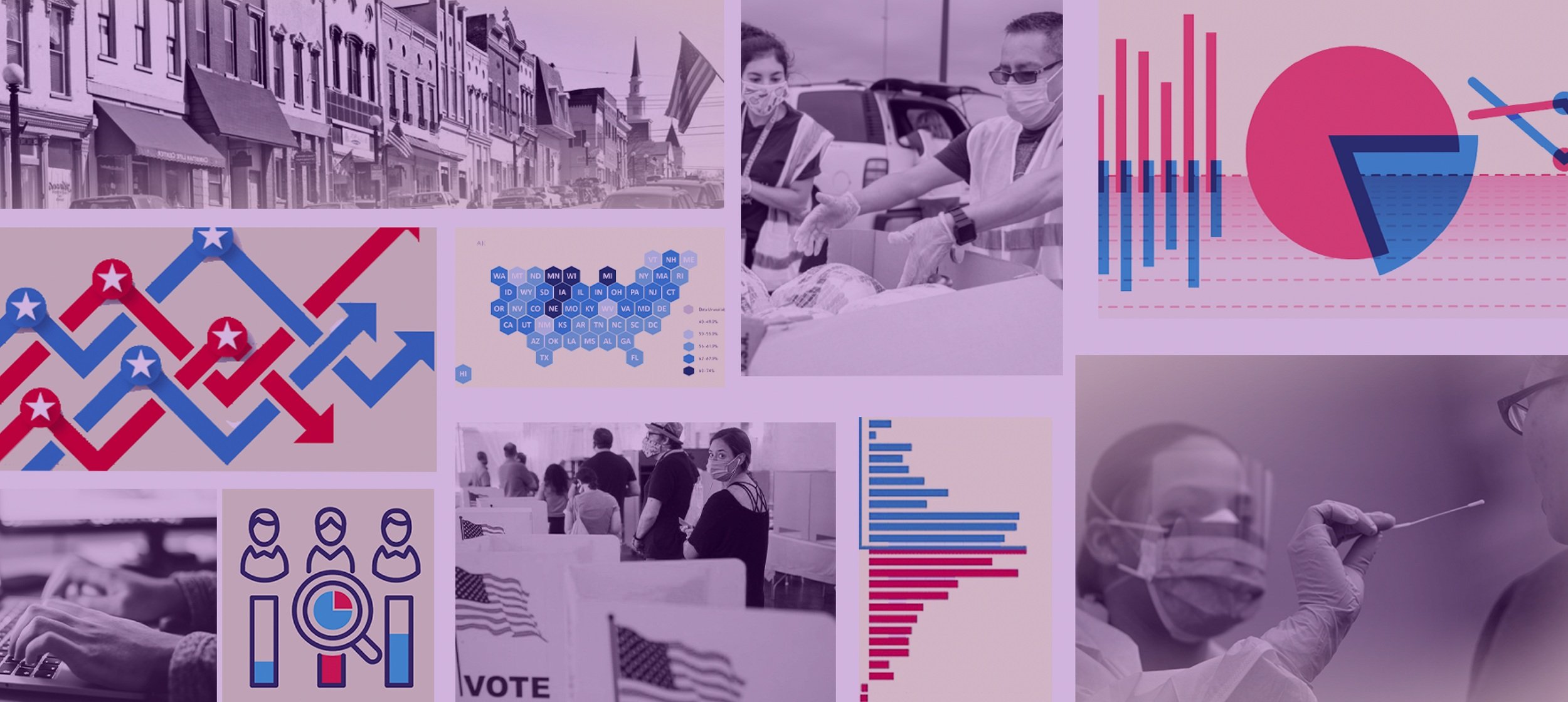
Pandemic to Prosperity
Measuring Rapid Changes to Build Prosperous and Resilient Communities
New! Pathways to Prosperity Initiative
Building Climate Resilience
January 30, 2024:
A Guide to Equitable Climate Investments
Communities across the United States have a massive opportunity to leverage federal investments to mitigate the impacts of climate change. This report serves as a guide to ensuring those funds are distributed equitably and strategically — saving lives, improving well-being, and strengthening communities.
Latest Release
Pandemic to Prosperity: South
October 17, 2023:
A Focus on the South to Lead the Way in Pandemic Recovery
For decades, the American South has lagged on nearly every indicator of prosperity and equity. But the region has the potential to generate groundbreaking solutions to entrenched problems and lead the way for the entire nation.
FROM THE TEAM
Pandemic to Prosperity Impacting Recovery: Data to Dollars
By Alysha Rashid and Tamika Turner
From the very first issue, the Pandemic to Prosperity project has supported people and organizations looking to inform how the pandemic has impacted Americans and how federal resources are spent in their communities.
These efforts to inform government and communities with the data they need as they come together to make choices about how best to use large ARP fund allocations have resulted in tangible changes and commitments.
By Denice Ross and Allison Plyer
5 Data Lessons from the Pandemic
Eighteen months since the Covid pandemic upended the world, and sixteen years since we learned this lesson from Hurricane Katrina, good data is the path toward an equitable recovery.
Here are 5 lessons learned from the pandemic and our careers in data and disasters.
By Denice Ross and Allison Plyer, co-creators, Pandemic to Prosperity and Pandemic to Prosperity: South
National Report
Two Years Since Covid-19 Announced on U.S. Soil
January 21, 2022
January 21 will mark two years since Covid-19 was first announced on U.S. soil. Since then, over 65 million Americans have had Covid, and more than 850,000 Americans have died from Covid, leaving behind millions of bereaved loved ones.
Our Data Focus
These metrics will help decision makers and community leaders identify needs and adapt priorities, policies, strategies, and investments over time.
Future reports will allow leaders to develop frequently updated situational awareness across sectors that support more innovation in addressing recovery challenges, and establish a shared vision and a common operating picture to support working together and forming new partnerships. The data are broken into four categories:
1
Pandemic: Lives & Livelihoods
Measuring the twin health and economic impacts.
2
Prosperity: Government
Measuring responsiveness and accountability.
3
Prosperity: Institutions
Measuring strength of journalism, schools, and more.
4
Prosperity: People
Measuring how individuals are faring.
Pandemic to Prosperity is a project of the National Conference on Citizenship.
About
History has shown that large-scale crises accelerate pre-existing trends and permanently change societies and civic life. While most of the nation’s attention is currently focused on the response to Covid-19, we must ensure that recovery efforts in the months and years ahead lead to a more just and equitable society. Pandemic to Prosperity offers a comprehensive overview of the Covid-related impacts on our lives and livelihoods, governments, civic institutions, and overall well being.
Recovery from the pandemic will vary across communities, and different populations will face various barriers to achieving shared prosperity. Pandemic to Prosperity’s thoughtfully-curated data will illuminate the challenges facing the nation’s most vulnerable. In addition, this reliable source of wide-ranging, impartial information will be valuable in aligning public and private sector efforts and reflect progress made, or the lack thereof, over time.




